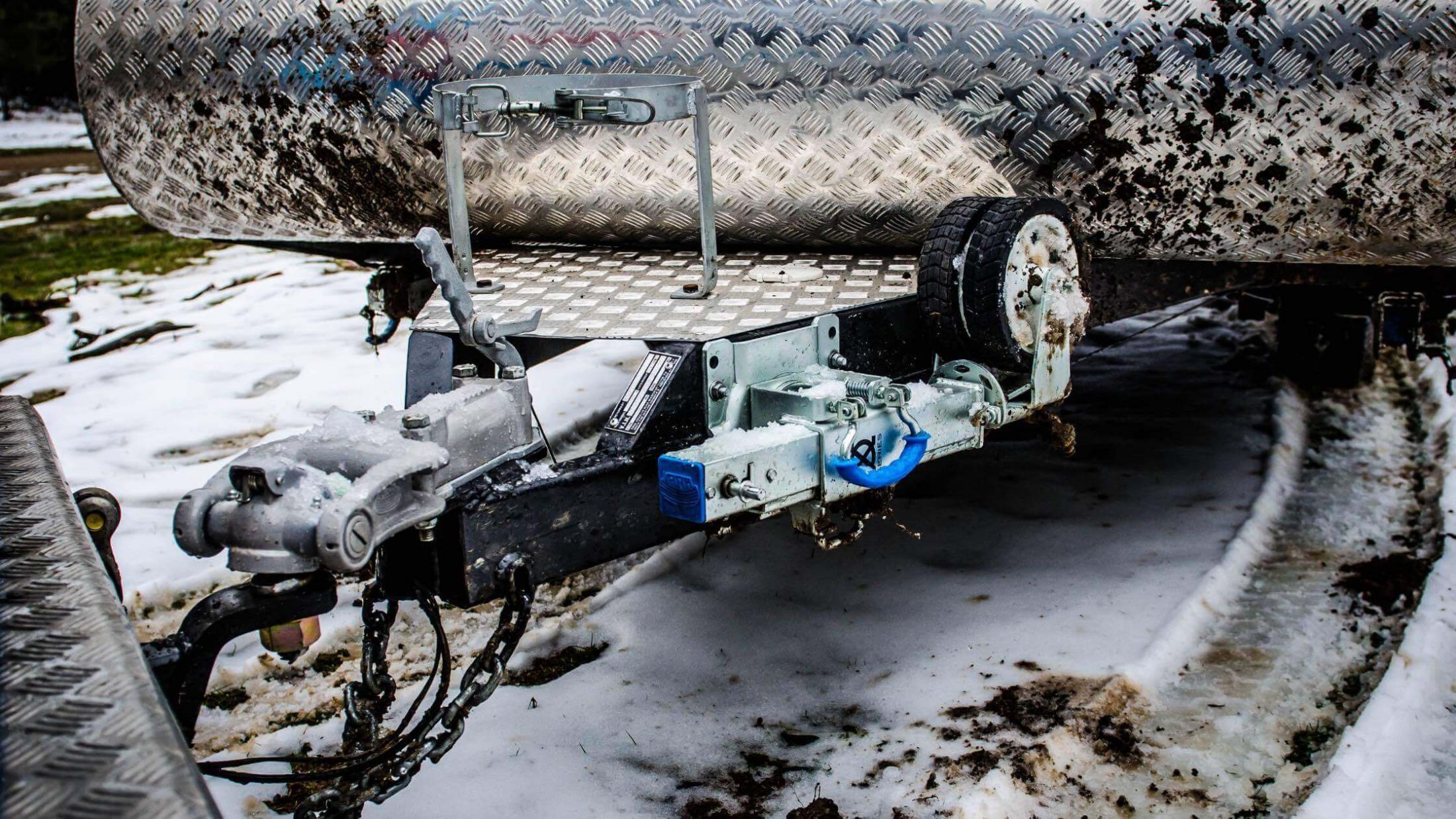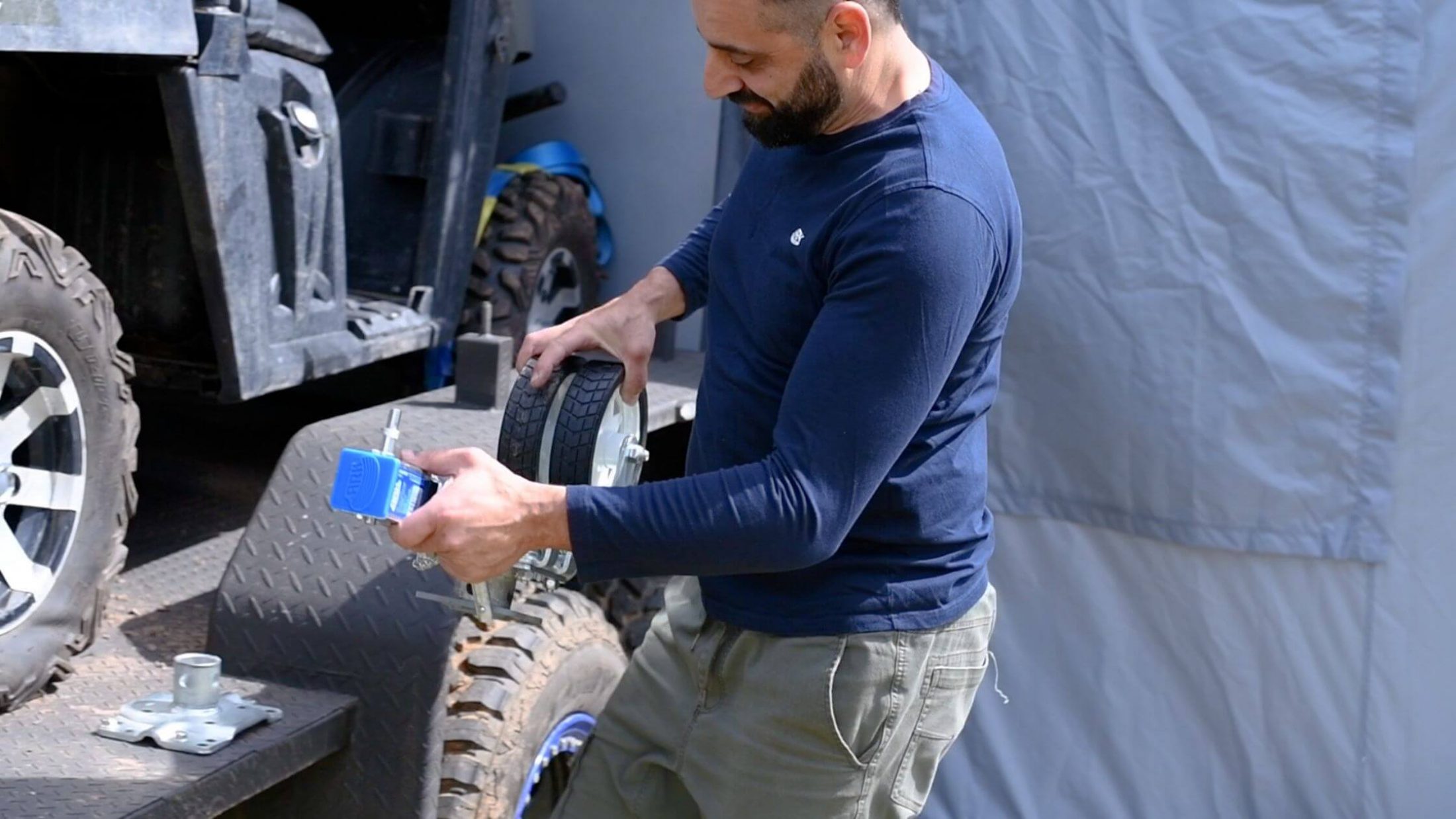For many people who like to hit the tracks with a camper trailer, caravan or boat in tow, improving on the standard trailer towing gear you’re using is often necessary. Because we’re all different, and we all have different desires when it comes to hitting the tracks and heading to our favourite campsites, our towing needs are also different. For some people, the adventure of taking the gnarliest tracks to our favourite campsite is part of the fun, while others will prefer getting to camp as quickly and easily as possible so they can crack open the esky and wet a line. That means that the towing gear that comes standard with your trailer may not be the ideal gear for you, and when it comes to towing there’s one component that is hugely important to get right – your trailer coupling.
What is a Trailer Coupling?
A trailer coupling is the essential link between your trailer and your tow vehicle. It’s the component that is fitted to the leading edge of the A-frame of your trailer, and which connects to the tow hitch on your tow vehicle.
It’s REALLY important to mention this: the trailer coupling is NOT the tow hitch. Time and again we see so-called “expert” 4WD and off-road publications and shows referring to the coupling as a “hitch”. This is incorrect. The coupling is the component on your trailer, whereas the hitch is the component on your tow vehicle. It’s a pretty basic distinction, but something that people get wrong a lot of the time.

What does a Trailer Coupling do?
As already stated, a trailer coupling connects to the tow hitch on your tow vehicle, but the thing is, it’s far more important than just being a connector. It needs to be able to withstand the loads you’re towing, whether it be a small little 700kg box trailer with no brakes or a 3.5t off-road caravan with a full kit out and electric brakes.
It also needs to be able to handle any articulation that you demand of it, something that is especially relevant if you’re planning to tow off-road whether that be on soft sand beaches, or rough and complex 4WD tracks.
The Different Types of Trailer Couplings
There really is a lot of different types and styles of trailer coupling on the market, all with different strengths and weaknesses. Which coupling works best for you will depend on your needs, i.e. what and where you’re planning to tow. There are also different couplings to suit different types of tow hitches, from your standard 50mm ball hitch to an off-road specific polyblock hitch. We’re going to look at three main types of couplings: fixed couplings, over-ride couplings, and off-road couplings.
Before we do, it’s worthwhile to take a quick refresher on the legalities surrounding brake requirements on trailers. In a nutshell, there are essentially three levels. For trailers that are hauling a weight of under 750kg (including the trailer weight), no trailer braking system is required. For trailers that are hauling a weight of between 750kg and 2000kg (again, including the trailer weight) the trailer must have either a mechanical or hydraulic braking system fitted. And lastly, for any trailer that is hauling over 2000kg (you guessed it – including the weight of the trailer), it’s a legal requirement for your trailer to be fitted with electric brakes that are controlled by an electric brake controller.
With that out of the way, let’s take a look at the different coupling types.

Fixed Couplings
The most common type of coupling, simply because of how basic they are. A fixed coupling, such as Ark’s 3 Hole 50mm Coupling simply bolts onto the chassis of your trailer and connects to the standard 50mm ball hitch of your tow vehicle. A basic fixed coupling is relatively limited in how much articulation it offers, so it’s best suited to towing up to 2,000kgs on the road.
There are also fixed couplings that are capable of towing heavier trailers with electric brakes, such as Ark’s Electric Coupling with Ratchet Handle for 50mm Ball Hitches. This hitch is rated for up to 3500kg trailers that are fitted with electric brakes, and like the basic coupling works with the standard 50mm ball hitch. These couplings also offer relatively limited articulation, which means they’re best suited to on-road towing of things such as car trailers.

Over-Ride Couplings
Over-ride couplings are the next step up from a fixed coupling and are designed to activate the mechanical or hydraulic brakes on your trailer via an inertial-activated mechanism. As we know, any trailer that is hauling weights of between 750kg and 2000kg are required to be fitted with mechanical or hydraulic brakes, and an over-ride coupling such as Ark’s 50mm Over-Ride Coupling is designed specifically for this.
Here’s how they work: As the driver brakes, the coupling feels the inertial force the tow vehicle is applying to it, and it compresses a spring within it. When this spring is compressed, the brakes are triggered.

Off-Road Couplings
There are many different types of off-road couplings that are specifically designed to tow your camper trailer, caravan, or boat on the vastly varying 4WD tracks Australia has to offer. Off-road couplings are designed to provide a great degree of articulation across all three axiis (i.e. yaw, pitch and roll), and they achieve this in varying ways. Off-road couplings will often require a matching style of off-road hitch.
One common type is the polyblock style of coupling. Rather than utilising the standard 50mm tow hitch, the polyblock coupling utilises a plastic block that connects to the hitch via a through-pin. A coupling of this type provides a full 360 degrees of roll, which goes a long way to preventing your trailer from rolling in extreme off-road conditions.
The second type of off-road coupling we’re going to look at, and our personal favourite, is the fully articulating 50mm ball hitch off-road coupling, such as Ark’s 3.5t XO Off-Road Coupling with Parkbrake. There are a number of benefits to this type of coupling. Firstly, unlike many off-road couplings, it works with your tow vehicle’s standard 50mm ball hitch. That means there’s no need to change the hitch on your tow vehicle. That makes things much easier if you’re towing an off-road caravan while you’re on holiday, but need to tow the little box trailer to the tip on the weekend! Secondly, the XO Off-Road Coupling offers full off-road articulation, so you’re getting all the benefits of something like the polyblock coupling but without the need to switch out the tow hitch on your tow vehicle.

Want to Know More About Trailer Couplings?
At Ark, we test all of our products, trailer couplings included in the greatest testing ground there’s ever been – the Aussie outdoors! We love nothing more than hitching up the camper trailer and hitting the tracks as soon as the clock hits 5pm on a Friday (Okay, you caught us out – 1pm!)
100% Aussie-owned and independent, ARK have been the leaders in trailer parts, towing gear and 4WD accessories for over 40 years. Whether it’s towing gear such as couplings and hitches or 12V power systems and battery packs to enhance your camping experience, the team at ARK have you covered. Get in touch with us today to learn how our expertise can help you get off-road more often!












